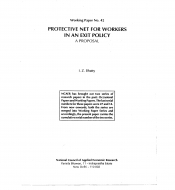Protective Net for Workers in an Exit Policy
July 1993
The package of policy reforms initiated by government recently, of which an exit policy is a part, derives its legitimacy from the need to stablise and restructure the economy as a means for regenerating its capacity to sustain a higher rate of growth on a firmer basis. The process of restructuring involves a move away from a protective regime to a competitive environment where the pressure of market forces would help in ensuring the much needed efficiency in the use of resources. As in this environment entry into industry would have to be free, it only follows that exit must also be free. Not only that, efficiency in the use of resources would also require an adjustment in the work force wherever it is in excess.
Viewed in this context, an exit policy is an integral part of wider policy initiative aimed at achieving, over a period of time, a more efficient deployment of labour and other resources, a sustained expansion in employment opportunities and an overall rise in labour as well as total factor productivity. It this scenario is juxtaposed with one where industrial sickness is proliferating causing substantial resources to be wastefully locked up, employment of excess labour is common, costwise industry is not internationally competitive thereby restricting exports and, all together, restraining growth of industry and employment and depressing labour productivity as well as real wages, it would immediately appear that an exit policy, viewed in its wider context, is not against but in the interest of workers.
National Growth and Macroeconomic Centre







